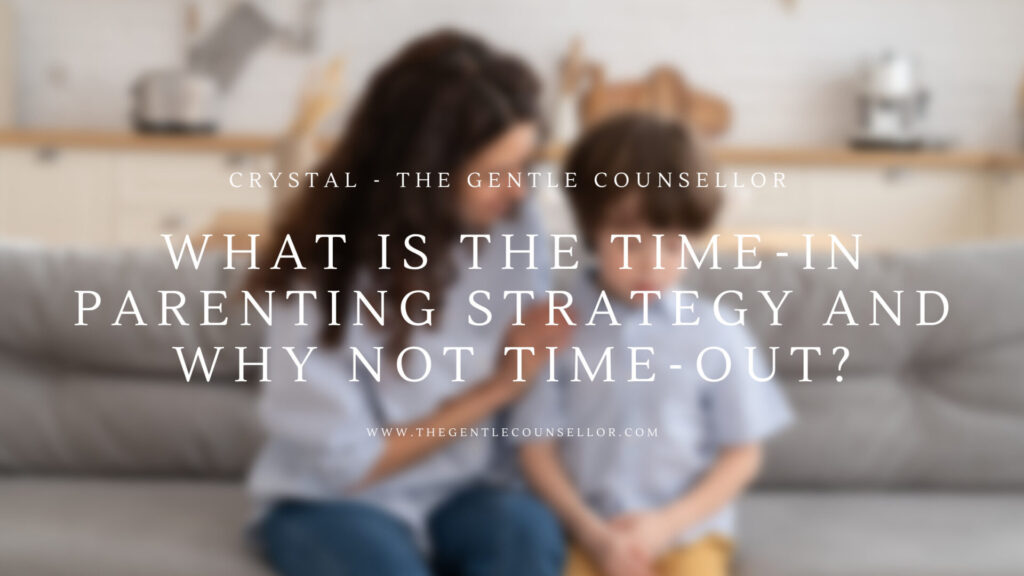
What is the Time-In parenting strategy and Why not Time-Out?
Time-outs can be rejecting and shaming. Time-in is effective discipline and promotes secure attachment, connection, and emotional regulation.
The problems with Time-Out
Time-out was a common recommendation for parents to use as a way to stop parents from smacking and hitting their child. The original idea was for parents to take a time-out to remove themselves from the situation to prevent causing any physical harm to their child. Unfortunately along the way this got turned around into parents rejecting their child and locking them in their rooms alone or placing them on a naughty step or somewhere else far away from the adult.
The things that this type of Time-out achieves are:
- Rejection
- Fear
- Shame
- Dysregulated (Upset, Distressed)
- Parent is triggered
- Ignored the unmet need
Time-in is an effective discipline and parenting strategy
The main point of difference between time-out and time-in is that a time-in does not force your child to separate from you, it does not communicate to the child that your love is conditional. So for example some children choose to go to their room or elsewhere to calm down, that is not time-out. Putting or forcing your child in a separate room and then closing/locking a door without any acknowledgment of their feelings or explanation of boundaries and consequences that are appropriate for their age and development is a time-out.
What if the child is hurting me or another?
If a child is physically hurting the parent or another person, you may have to remove yourself or your child and say ‘I will not let you hurt mummy/your sister. I have to keep everyone safe right now.’ It's ok to set a boundary and it's your job to keep everyone safe from harm. This is where the context to the situation is important. Time-in can still be implemented here, however, it may look slightly different. A child may need time to be alone and calm down, and you can tell them, 'When you're ready, I'm here to cuddle/talk. I'll be in the kitchen or you can call out to me to come in here.'
How do you do this when you have more than one, or sitting with them is not immediately feasible?
If you have another child to attend to for example you can say ‘I can see that you are really upset. I want to help you when you are calm and ready. I have to feed baby sister and I will be right back’.
The things that Time-in achieves are:
- Connection
- Safety
- Promotes morals and values
- Co-regulation
- Emotional regulation
- Improves relationship
- Secure Attachment
- Needs are met
How To Do Time-in
- Sit with your child and allow them to express their emotions
- Acknowledge and name how they are feeling
- Empathise - What is hard for them right now?
- Your child is only ready to listen when they are calm enough
- Follow with correction if needed and discuss choices and consequences, or what was not appropriate, or problem solve on what could be done differently next time.
If you struggle with being calm yourself, it's ok to do your own time-out and remove yourself from the situation, walk away, and implement some strategies to calm down such as deep breathing, calling a friend for support, or crying. You can book a counselling session with me here for more individualised support.
Have you heard of a time-in before?
Check out and Download my Emotional Regulation Guide.
Do you need more parenting support or a parenting course?
Circle of Security Parenting is a parenting program that enhances your parenting skills and helps you learn effective ways to understand and respond to your child’s moods and behaviour. It is designed to really help you make sense of what your child needs, so you can give them the best in return. From the very first session, you will gain more confidence in your parenting.
Click here for more information and to Book a Circle of Security Parenting session with me.
2 thoughts on “What is the Time-In parenting strategy and Why not Time-Out?”